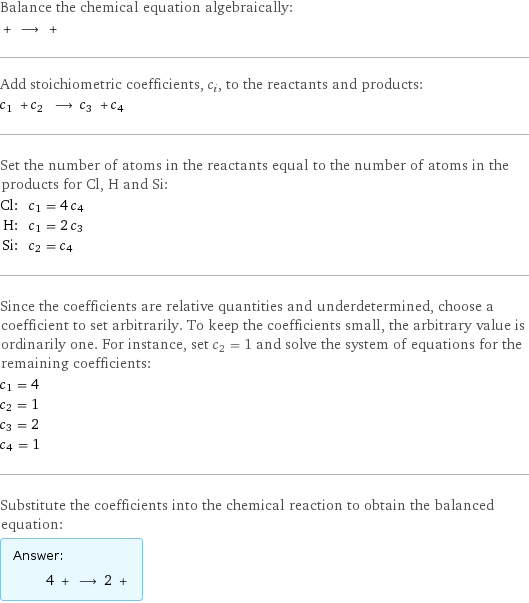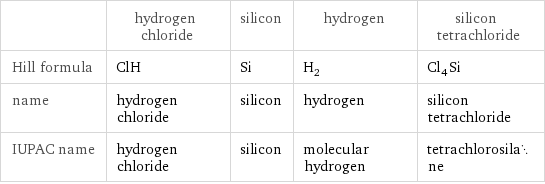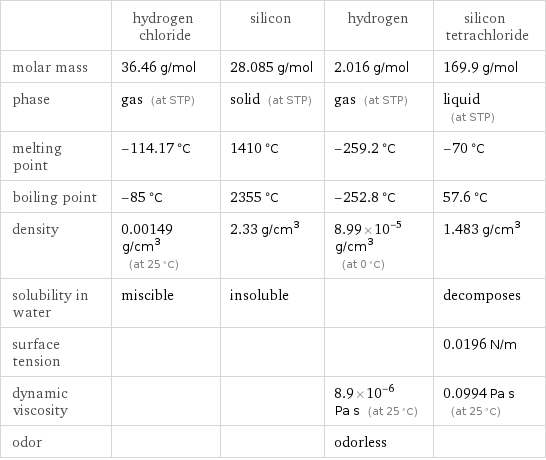Input interpretation

hydrogen chloride + silicon ⟶ hydrogen + silicon tetrachloride
Balanced equation

Balance the chemical equation algebraically: + ⟶ + Add stoichiometric coefficients, c_i, to the reactants and products: c_1 + c_2 ⟶ c_3 + c_4 Set the number of atoms in the reactants equal to the number of atoms in the products for Cl, H and Si: Cl: | c_1 = 4 c_4 H: | c_1 = 2 c_3 Si: | c_2 = c_4 Since the coefficients are relative quantities and underdetermined, choose a coefficient to set arbitrarily. To keep the coefficients small, the arbitrary value is ordinarily one. For instance, set c_2 = 1 and solve the system of equations for the remaining coefficients: c_1 = 4 c_2 = 1 c_3 = 2 c_4 = 1 Substitute the coefficients into the chemical reaction to obtain the balanced equation: Answer: | | 4 + ⟶ 2 +
Structures

+ ⟶ +
Names

hydrogen chloride + silicon ⟶ hydrogen + silicon tetrachloride
Chemical names and formulas

| hydrogen chloride | silicon | hydrogen | silicon tetrachloride Hill formula | ClH | Si | H_2 | Cl_4Si name | hydrogen chloride | silicon | hydrogen | silicon tetrachloride IUPAC name | hydrogen chloride | silicon | molecular hydrogen | tetrachlorosilane
Substance properties

| hydrogen chloride | silicon | hydrogen | silicon tetrachloride molar mass | 36.46 g/mol | 28.085 g/mol | 2.016 g/mol | 169.9 g/mol phase | gas (at STP) | solid (at STP) | gas (at STP) | liquid (at STP) melting point | -114.17 °C | 1410 °C | -259.2 °C | -70 °C boiling point | -85 °C | 2355 °C | -252.8 °C | 57.6 °C density | 0.00149 g/cm^3 (at 25 °C) | 2.33 g/cm^3 | 8.99×10^-5 g/cm^3 (at 0 °C) | 1.483 g/cm^3 solubility in water | miscible | insoluble | | decomposes surface tension | | | | 0.0196 N/m dynamic viscosity | | | 8.9×10^-6 Pa s (at 25 °C) | 0.0994 Pa s (at 25 °C) odor | | | odorless |
Units
